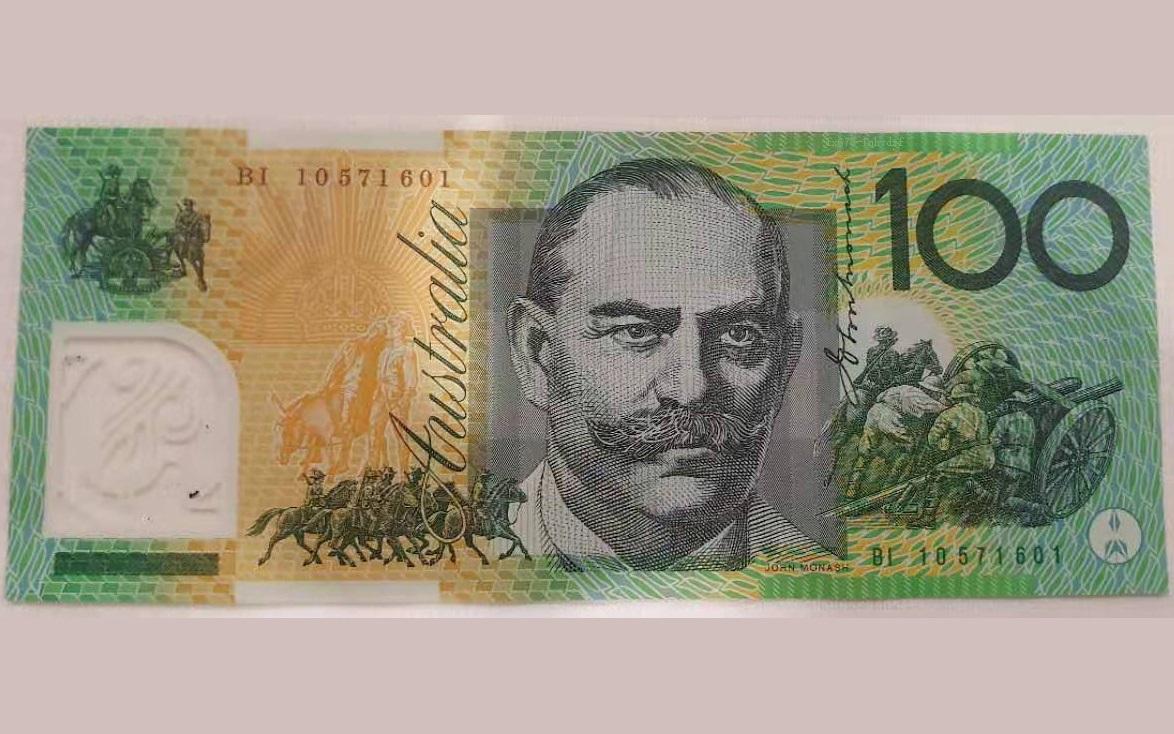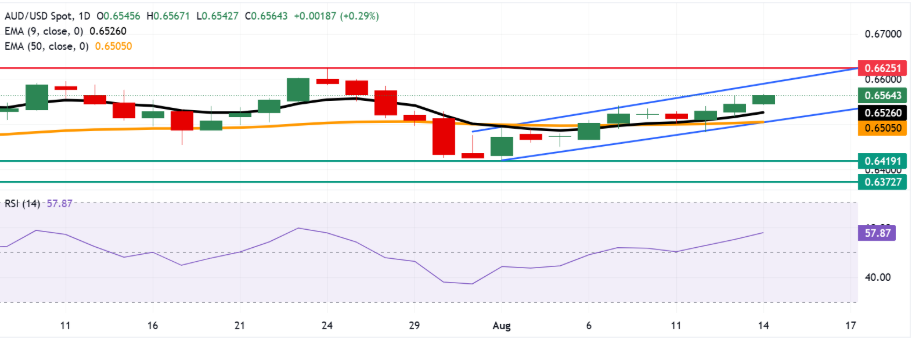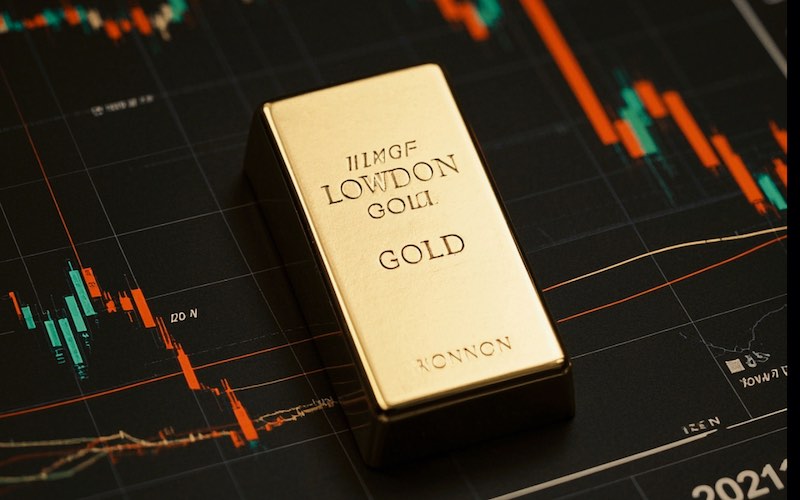Employment data boosts Australia's unemployment rate to 4.2%, triggering a three-day rally for the Australian dollar, fueled by expectations of a Fed rate cut.
2025-08-14 11:59:41
Australia's employment change in July was 24,500 (revised up from 2,000 to 1,000 in the previous month), below market expectations of 25,000. Meanwhile, the unemployment rate fell to 4.2% (previous value: 4.3%) as expected.
U.S. Treasury Secretary Scott Bessant said in an interview on Wednesday that the Federal Reserve's short-term interest rate should be 1.5-1.75 percentage points lower than the current effective benchmark rate of 4.33%. Bessant added that the Fed is very likely to choose to cut interest rates by 50 basis points in September.

The dollar extended losses, while the Australian dollar appreciated on the possibility of a Fed rate cut.
The US dollar index (DXY) has fallen for the third consecutive trading day and is currently trading around 97.72. Traders may focus on the US Producer Price Index (PPI) data to be released in the North American session, followed by the weekly initial jobless claims data.
According to the CME FedWatch tool, federal funds futures traders currently expect the probability of a 25 basis point rate cut at the September meeting to be close to 95%.
US President Trump recently shared his "paper calculations," arguing that the Federal Reserve interest rate should remain around 1%. He also suggested that the current interest rate level should be lowered by 3 to 4 percentage points, emphasizing that "interest rates are just paper."
Chicago Fed President Goolsbee made clear on Wednesday that economists agree that the Fed must maintain its independence from political interference. He emphasized the importance of independence, saying, "We simply cannot allow inflation to return."
White House spokeswoman Carolyn Levitt said on Tuesday that U.S. President Trump is considering filing a lawsuit against Federal Reserve Chairman Jerome Powell over his handling of renovations at the Fed headquarters, raising concerns about the central bank's independence.
Data released by the U.S. Bureau of Labor Statistics (BLS) on Tuesday showed that the CPI rose 2.7% year-on-year in July, the same as the previous month but lower than the expected 2.8%. During the same period, the core CPI rose 3.1% year-on-year, accelerating from 2.9% in June and exceeding market expectations of 3%.
Hours before the original agreement was set to expire, the Trump administration announced it would postpone its planned full tariff increase on Chinese goods for another 90 days. In response to Trump's executive order extending the tariff truce, China decided to suspend tariffs on US goods. It's important to note that given the close trade partnership between China and Australia, any fluctuations in the Chinese economy could have a direct impact on the Australian dollar.
U.S. Treasury Secretary Scott Bessant revealed on Wednesday that Chinese and American trade officials will meet again in the next two to three months to discuss the future of bilateral economic relations. Bessant emphasized that "the United States needs to see China make sustained progress in curbing the flow of fentanyl, and this evaluation period could take several months or even a year before considering reducing tariffs."
The Reserve Bank of Australia (RBA) announced a 25 basis point interest rate cut on Tuesday, as widely expected by the market, lowering the official cash rate (OCR) from 3.85% to 3.6% at its August policy meeting.
Reserve Bank of Australia Governor Michelle Bullock said current forecasts suggested the cash rate might need to be lowered to ensure price stability, but he stressed the board would take a "meeting-by-meeting" approach and declined to make any commitments on where interest rates would go if financial markets were volatile.
Australia's wage price index rose 0.8% quarter-on-quarter in the second quarter, in line with market expectations but lower than the 0.9% increase in the previous quarter. The year-on-year increase was 3.4%, higher than the expected 3.3%.
The Reserve Bank of Australia (RBA) noted in its monetary policy statement that inflation continues to moderate, but the outlook remains uncertain. The statement reiterated that maintaining price stability and full employment remains the primary policy objective.
Australian dollar briefly broke through 0.6550, strengthening the bullish trend
The Australian dollar briefly broke through the 0.6550 level against the US dollar on Thursday. Technical analysis on the daily chart shows that the market maintains a bullish bias as the exchange rate continues to rise within an ascending channel pattern. The currency pair is currently trading firmly above its 9-day exponential moving average (EMA), indicating strengthening short-term momentum. Furthermore, the 14-day relative strength index (RSI) has crossed above the 50-level, further confirming bullish sentiment.
AUD/USD could test the 0.6590 level. A break above this resistance level would strengthen bullish momentum and push the pair towards the 0.6600 psychological level, and then challenge the nine-month high of 0.6625 reached on July 24.
On the downside, the pair could test the 9-day exponential moving average at 0.6526, before testing the 50-day moving average at 0.6505 and the key support zone at 0.6500, the lower limit of the ascending channel. A break below this support zone would weaken the short- to medium-term upward momentum and could lead to a test of the two-month low of 0.6419 recorded on August 1, or even the three-month low of 0.6372 set on June 23.

(AUD/USD daily chart and moving average, source: Yihuitong)
At 11:58 Beijing time, the Australian dollar was trading at 0.6548/49 against the US dollar.
- Risk Warning and Disclaimer
- The market involves risk, and trading may not be suitable for all investors. This article is for reference only and does not constitute personal investment advice, nor does it take into account certain users’ specific investment objectives, financial situation, or other needs. Any investment decisions made based on this information are at your own risk.





















